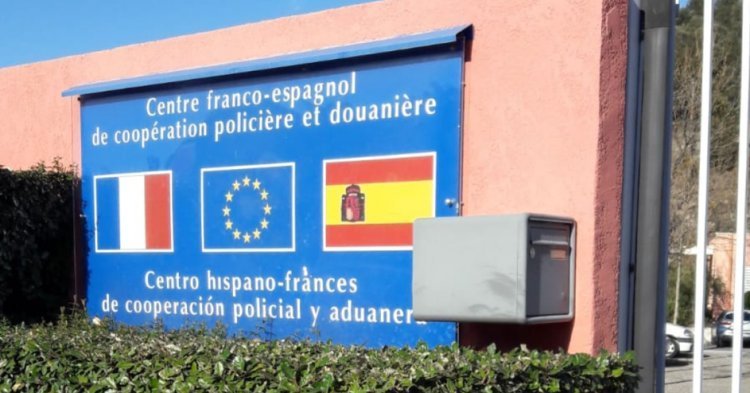Bilateral, interdepartmental structure
The implementation of police cooperation through the PCCC presupposes an initial agreement between Border States. This assertion is the consequence of the application of Article 39(4) of the Schengen Convention. It indicates that “in border areas, cooperation may be covered by arrangements between the competent Ministers of the Contracting Parties”.
As the number of parties is not limited to a maximum of two, multilateral PCCC have been created, for example the quadripartite centre headquartered in Luxembourg, gathering Germany, Belgium, France and Luxembourg. However, a large majority of established PCCC are based on bilateral agreements.
The Blois Agreement signed between France and Spain on 7 July 1998 implements cooperation through PCCC’s between these two States. The Le Perthus centre was the first one established on the basis of this agreement. It was inaugurated on 25 November 2002 by Minister of the Interior Nicolas Sarkozy and its Spanish counterpart Ángel Acebes.
In order to optimise the exchange of intelligence between parties, the PCCC was conceived as an interdepartmental structure. It brings together on the same platform officials and soldiers coming from every administration responsible for security missions. The PCCC of Le Perthus assembles, on the French side, national police officers (border police, urban safety and judicial police), military personnel of the national gendarmerie and customs officers. On the Spanish side, personnel of the National Police Corps (Cuerpo Nacional de Policía), the Civil Guard (Guardia Civil), the police force of Catalonia (Mossos d’Esquadra) and the Customs Surveillance Service (Vigilancia Aduanera, an agency dependent on the Treasury) are active.
The direction of this structure is ensured by a coordinator who – for France – is vested in the Directorate General of National Police or in the Directorate General of National Gendarmerie. In the case of the PCCC of Geneva, the coordinator is a representative of the French customs and indirect taxation authorities, with the rank of General Inspector at least. He is assisted by a detachment commander for every institution.
A crucial mission of intelligence exchange
Police and customs cooperation centres participate in the fight against cross-border crime, terrorism and also in the management of conflicts. To clarify this last point, these are phenomena which would have consequences on the soil of the border state when they occurred on the territory of a neighbouring country. This was recently the case with the yellow jackets demonstrations in France, close to the border, that led to traffic problems in Spain. The achievement of these goals goes necessarily through an intelligence exchange.
This exchange includes two components. Firstly, the PCCC is an interface for the “requests” between the bordering states. These are information requests addressed by the services of a state to foreign partners through an institution concerned, acting within the PCCC.
In concrete terms, a request may for example be received by an operator from a French investigation service. This one integrates the request in a common computing ‘handrail’. The request would then be treated by the Spanish services. Their answer is sent back to the requesting agency by the French operator.
The databases consulted as part of these requests may cover many areas: checks related to vehicles, backgrounds, validity of documents, search files, information on corporations, and so on. The effectiveness of the device can be explained by its fluidity. On the one hand, the presence of four centres on the French-Spanish border enables a 24//7 presence. On the other hand, requests do not need any particular formal requirement, which allows for unconstricted and fast exchange.
The PCCC should be considered as a structure of “analysis” and exploitation of intelligence. Indeed, it may be needed to realise overlaps in order to identify offenders. In this way, it facilitates the work of these French and Spanish investigation services.
Finally, the PCCC can intervene as a support structure for operational services. In this case, it may be needed to coordinate cross-border operations, participate in thematic sessions or assist the exercise of observations and cross-border prosecutions.
Through the plurality of the stakeholders and its flexibility, the police and customs cooperation centre can be a useful and quick tool of intelligence exchange within the European Union. Yet beyond its missions fixed by the agreement that institutes it, it appears as a means of reconcilement between police and customs authorities of these States. Despite different uniforms but thanks to these common structures, more exchange of practices and expertise are accomplished within police and customs cooperation centres like that in Le Perthus.


Follow the comments: |
|
